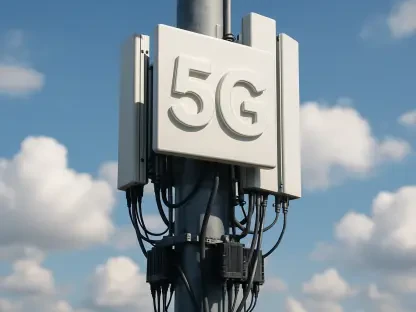The rapid integration of the Internet of Things (IoT) into everyday operations across industries has sparked a transformative wave, with private wireless networks emerging as a cornerstone for secure and efficient connectivity. As digital ecosystems expand, the demand for reliable, low-latency, and high-speed solutions to support mission-critical applications has never been more pressing. This year, a prestigious recognition program has spotlighted the pioneers driving these advancements, celebrating their contributions to reshaping how sectors like manufacturing, healthcare, and transportation operate. By honoring groundbreaking achievements, this initiative underscores the pivotal role of tailored wireless systems in powering the next generation of industrial and urban innovation. The focus on private networks, especially those harnessing cutting-edge technologies, highlights a shift toward customized infrastructure that meets specialized needs, setting a benchmark for progress in an increasingly connected world.
Celebrating Pioneers in Private Wireless Technology
The announcement of this year’s awards shines a light on companies that have demonstrated exceptional innovation in private wireless networks, a field critical to the IoT landscape. These networks, often built on 5G technology, provide unmatched security and performance compared to traditional public systems, making them ideal for high-stakes environments. Honorees such as Cradlepoint and Ericsson have been recognized for their solutions that tackle pressing issues like downtime and data breaches, ensuring seamless operations in industries where every second counts. Their work exemplifies how dedicated connectivity can transform complex challenges into opportunities for efficiency and growth. Beyond individual achievements, this recognition reflects a broader industry trend toward adopting systems that prioritize reliability over generic accessibility, paving the way for more resilient digital frameworks across diverse applications.
A deeper look into the impact of these innovations reveals how private wireless networks are redefining operational standards in key sectors. In manufacturing, for instance, the ability to support robotics and real-time data analytics without the constraints of wired infrastructure has led to significant cost savings and productivity gains. Similarly, healthcare facilities benefit from reduced latency, enabling critical applications like remote surgeries and patient monitoring with unprecedented precision. The award-winning solutions demonstrate a commitment to addressing unique industrial demands, offering scalability that adapts to evolving needs. As more organizations recognize the value of tailored connectivity, the influence of these pioneering efforts is expected to expand, driving further investment and collaboration in building secure, future-ready networks that underpin digital transformation.
Market Growth and Future Projections for Private Wireless
The private wireless sector is experiencing remarkable growth, fueled by the widespread rollout of 5G and strategic spectrum allocations by governments worldwide. Industry reports indicate that the market, already valued at billions, is on track for exponential expansion, with some projections estimating a 500% increase in adoption by 2030, particularly in manufacturing and energy. This surge is driven by declining costs through operational expenditure models, making advanced connectivity more accessible to enterprises of varying scales. Insights from leading analysts suggest that automation and sustainability are key motivators, as businesses seek to optimize resources while maintaining competitive edges. The momentum in this space underscores the critical role of private networks in supporting IoT-driven initiatives that demand robust and efficient infrastructure.
Beyond current trends, the future of private wireless networks holds immense potential as integration with edge computing and real-time analytics becomes more prevalent. Enterprises are increasingly turning to these systems to reduce reliance on centralized data processing, enhancing operational resilience in dynamic environments. The scalability of 5G-based solutions offers a pathway to handle growing data demands, especially as smart cities and intelligent transportation systems gain traction. While challenges like regulatory frameworks and compatibility with existing infrastructure remain, the opportunities for mobile and virtual network operators to deliver customized IoT solutions are expanding rapidly. This evolving landscape suggests that the next few years, from now through 2027, will be pivotal in determining how widely these technologies are embraced, setting the stage for a new era of connectivity that prioritizes both innovation and practicality.
Industry Collaboration and Upcoming Opportunities
The momentum behind private wireless innovation is further amplified by a series of global events designed to foster collaboration and showcase emerging solutions. Platforms such as the mioty Global Summit in Nuremberg and the IoT Solutions World Congress in Barcelona are set to bring together industry leaders, technologists, and policymakers to discuss the future of IoT connectivity. These gatherings provide a vital space for sharing insights on how private networks can drive Industry 4.0, emphasizing the importance of cross-sector partnerships in overcoming implementation hurdles. The recognition of award recipients at such forums highlights their role as catalysts for dialogue, inspiring others to explore how tailored wireless systems can address specific challenges in their fields. This collaborative spirit is essential for sustaining the rapid pace of advancement seen in the sector.
Another dimension of these industry engagements is the focus on tackling persistent barriers to adoption, such as regulatory complexities and integration costs. Discussions at upcoming events are expected to delve into actionable strategies for aligning new technologies with existing frameworks, ensuring a smoother transition for businesses. The involvement of diverse stakeholders, from government bodies to technology providers, signals a collective commitment to unlocking the full potential of private wireless networks. As solutions become more refined, the emphasis on real-world applications—ranging from smart grid management to autonomous vehicle networks—demonstrates the versatility of these systems. The insights gained from past award cycles and ongoing forums will likely shape how industries prioritize connectivity investments in the coming years, fostering an environment where innovation thrives.
Reflecting on Achievements and Charting the Next Steps
Looking back, the celebration of this year’s award recipients marked a significant moment in acknowledging the strides made in private wireless technology. Companies like Cradlepoint and Ericsson stood out for their ability to deliver solutions that addressed critical needs, setting a high standard for others in the field. The emphasis on 5G-driven systems showcased how far the industry has come in providing secure, low-latency connectivity for mission-critical tasks. This recognition not only honored past efforts but also served as a reminder of the ongoing need to push boundaries in an ever-evolving digital landscape. The collaborative energy surrounding these achievements underscored the shared vision of transforming industrial and urban environments through advanced networks.
Moving forward, the focus should shift to actionable strategies that build on these successes, such as streamlining regulatory processes to accelerate deployment. Stakeholders must also prioritize investments in interoperable systems that integrate seamlessly with legacy infrastructure, minimizing disruptions during transitions. Exploring partnerships between public and private entities could further drive innovation, ensuring that the benefits of private wireless networks reach a broader audience. As the IoT ecosystem continues to expand, maintaining a balance between technological advancement and practical implementation will be key. The groundwork laid by this year’s honorees offers a roadmap for navigating future challenges, encouraging industries to embrace connectivity solutions that enhance efficiency and resilience in equal measure.









